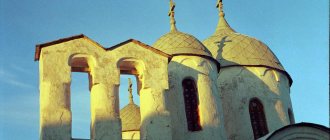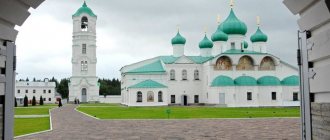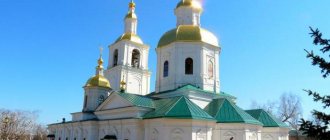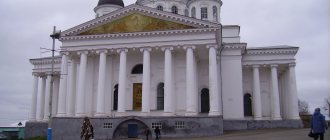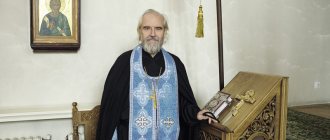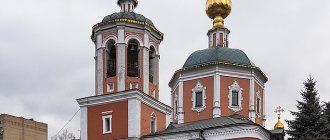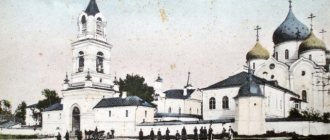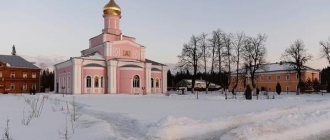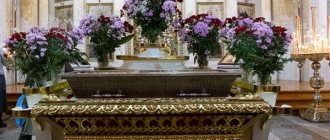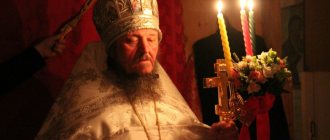Mir
Russia Tver region Tver Assumption Zheltikov Monastery Map loading in progress...
{"format":"leaflet","minzoom":false,"maxzoom":false,"limit":50,"offset":0,"link":"all","sort":[""], "order":[],"headers":"show","mainlabel":"","intro":"","outro":"","searchlabel":"\u2026 \u0441\u043b\u0435\ u0434\u0443\u044e\u0449\u0438\u0435 \u0440\u0435\u0437\u0443\u043b\u044c\u0442\u0430\u0442\u044b","default":"","import-annotation":false,"width ":"auto","height":"350px","centre":{"text":"","title":"""link":"""lat":56.85962500000000119371179607696831226348876953125,"lon": 35.91185999999999722831489634700119495391845703125,"icon":""},"title":"","label":"","icon":"","lines":[],"polygons":[],"circles":[ ],"rectangles":[],"copycoords":false,"static":false,"zoom":8,"defzoom":14,"layers":["OpenStreetMap"],"image layers":[] ,"overlays":[],"resizable":false,"fullscreen":true,"scrollwheelzoom":true,"cluster":false,"clustermaxzoom":9,"clusterzoomonclick":true,"clustermaxradius":80, "clusterspiderfy":true,"geojson":"","clicktarget":"","showtitle":true,"hidenamespace":false,"template":"","userparam":"","activeicon": "","pagelabel":false,"ajaxcoordproperty":"","ajaxquery":"","locations":[{"text":"\u003Cb\u003E\u003Ca href=\"/palomnik/%D0% 92%D0%BE%D0%B7%D0%BD%D0%B5%D1%81%D0%B5%D0%BD%D1%81%D0%BA%D0%B8%D0%B9_%D0%9E% D1%80%D1%88%D0%B8%D0%BD_%D0%B6%D0%B5%D0%BD%D1%81%D0%BA%D0%B8%D0%B9_%D0%BC%D0% BE%D0%BD%D0%B0%D1%81%D1%82%D1%8B%D1%80%D1%8C\" title=\"\u0412\u043e\u0437\u043d\u0435\u0441\u0435\ u043d\u0441\u043a\u0438\u0439 \u041e\u0440\u0448\u0438\u043d \u0436\u0435\u043d\u0441\u043a\u0438\u0439 \u043c\u043e\u043d\u 0430\u0441\u0442\u044b\u0440\ u044c\"\u003E\u0412\u043e\u0437\u043d\u0435\u0441\u0435\u043d\u0441\u043a\u0438\u0439 \u041e\u0440\u0448\u0438\u043d\u0436\ u0435\u043d\u0441\u043a\ u0438\u0439 \u043c\u043e\u043d\u0430\u0441\u0442\u044b\u0440\u044c\u003C/a\u003E\u003C/b\u003E","title":"\u0412\u043e\u0437\u043d \u0435 \u0441\u0435\u043d\u0441\u043a\u0438\u0439 \u041e\u0440\u0448\u0438\u043d \u0436\u0435\u043d\u0441\u043a\u0438\u0439 \u043c \u043e\u043d\u0430\u0441\u0442 \u044b\u0440\u044c","link":"","lat":56.85962500000000119371179607696831226348876953125,"lon":35.911859999999997228314896347001194953 91845703125,"icon":""}],,"imageLayers":[]}
56.859625; 35.91186
Russia, Tver
Tver, Tver region
Russia
History of construction
The monastery was founded by Tver Bishop Arseny in 1394. This saint is glorified by the Russian Church and it is known about him that he came from a noble Tver family and in his early years retired to the Kiev Pechersk Monastery, where he took monastic vows.
Saint Arseny, Bishop of Tver
He was the archdeacon of Metropolitan Cyprian, and at his insistence he accepted the rank of bishop. The saint built the Assumption Zheltikov Monastery in the city of Tver in the likeness of the Kiev-Pechersk Monastery, in which he found his resting place in 1409, and the further history of the monastery developed as follows:
- under Vladyka Arseny, the stone Assumption Church was erected in 1404, and Vladyka was buried in it in 1409;
- during the Time of Troubles at the beginning of the 17th century, the monastery was destroyed and fell into disrepair;
- The Zheltikov Monastery in Tver was restored in the 1630s, and the main temple in 1652;
- in the 18th century, the Alekseevsky Temple and church were erected in honor of St. Anthony and Theodosius of Pechersk;
The monastery was closed after 1918. Since 1929, it housed an orphanage. In 1930, the bell tower was dismantled down to the first tier.
But the monastery was almost completely destroyed in 1941 by Soviet troops during their retreat: the Assumption Cathedral, Alekseevskaya Church, and the temple in honor of St. Anthony and Theodosius of Pechersk, rectory building, chapel, fence. It is difficult to explain the reason for such actions from a logical point of view, since there was no point in all this destruction.
Interesting fact! There is a version according to which the monastery buildings were blown up because they housed aircraft workshops. According to another version, the monastery was bombed by the advancing Germans, as there was an observation post in it.
Tverskoy Assumption Zheltikov Monastery, metochion of the diocesan monastery
This monastery has a rich, glorious history. Currently, the monastery is almost completely destroyed. All that remained from it was the fraternal building and the lower tier of the bell tower. The monastery was founded by Tver Bishop Arseny in 1394. It was located 5 versts west of Tver in a bend of the Darkness River, surrounded by a stone fence about 400 meters long and surrounded by a pine forest. This place was considered one of the most beautiful in the vicinity of Tver.
According to church tradition, Arseny was born in Tver. The year of his birth is unknown. He was brought up in piety and fear of God. Having lost his parents early and remaining the heir to a rich estate, he turned his house into a shelter for wanderers and the poor, thereby incurring reproach from his relatives. Desperate to overcome this enmity, the young man decided to part with the world and prayed to the Lord to show him the way. Hearing a voice in a dream calling him to Kyiv, he secretly left the city of Tver and went to the Kiev-Pechersk monastery, where he took monastic vows.
A virtuous and hardworking monk, knowledgeable in church rules, attracted the attention of St. Cyprian, the future Metropolitan of Moscow and All Rus'. Cyprian ordained the monk Arseny as a hierodeacon.
When Saint Cyprian took the throne of the Moscow Metropolis, he took Saint Arseny with him to Moscow, who was entrusted with all matters of the internal structure of the Russian Church.
At that time, great disagreements arose in Tver between the Tver prince Mikhail Alexandrovich and the slandered Tver bishop Euthymius. The latter was unjustly deprived of his chair and exiled to the St. Nicholas Mytitsky Monastery in Tver, where he soon died. In his place, Metropolitan Cyprian appointed Saint Arseny.
Having ascended the episcopal see, Arseny strove to put an end to the princely strife and establish peace and harmony in his native Tver. In 1403, he managed to reconcile the Tver prince Ivan Mikhailovich with his brother Kashinsky prince Vasily Mikhailovich.
Over the course of many years of archpastoral service, Saint Arseny founded about 40 monasteries in Tver and its environs, and also consecrated cathedrals in honor of the Archangel Michael and St. Nicholas in Staritsa, and the renovated stone Transfiguration Cathedral in Tver.
Saint Arseny did not forget his native Kiev-Pechersk Lavra, where he began his monastic labors. On the banks of the Tmaka River, 4 versts from Tver, on the Zheltikov tract, he founded a monastery, where at the same time a wooden church was built in the name of St. Anthony and Theodosius of Pechersk. On August 30, 1405, in the Zheltikov Monastery, Saint Arseny consecrated a stone church in honor of the Dormition of the Blessed Virgin Mary.
After the completion of the construction of the Zheltikov Monastery, by order of St. Arseny in 1406, a copy was made from the Kiev-Pechersk Patericon - the oldest edition of the collection of lives of Russian saints that has survived to our time, called the Arsenyevskaya.
The death of Saint Arseny followed the Great Lent of 1409. He was buried in the Zheltikov Monastery, in the narthex of the right chapel in the name of the Image of the Savior Not Made by Hands of the Assumption Church in a tomb that he made with his own hands. According to the chronicles, numerous miracles took place at the saint’s tomb. One of the miracles that happened at the saint’s shrine after his official canonization at the Council of 1547—the resurrection of the fisherman Terentius from the dead—was glorified by Bishop Akakios. Having learned about the miracle, he ordered the bells to be rung and, despite his extreme old age, he went to the monastery in a religious procession with the bishops and people. After interviewing the resurrected man and serving the liturgy, he bequeathed to be buried next to the wonderworker Arseny. In 1655, Patriarch Nikon visited the monastery. He examined the relics of Arseny and found them unchanged over the past 250 years - only the vestments had become dilapidated. At the request of His Holiness, a small particle was separated from the holy relics, which was then taken to Moscow. After the relics of the saint disappeared during the Great Patriotic War, by the providence of God, it was this particle of relics, taken by Patriarch Nikon to the capital, that was transferred to the Malitsky monastery in the 21st century.
The 17th and early 18th centuries became a time of radical transformation for the monastery. Old buildings erected under Arseny are gradually giving way to new ones. In 1637, due to dilapidation, the ancient stone church of the Assumption of the Virgin Mary, built by the saint himself, was dismantled, and a new building was erected in its place. It was a monumental five-domed cathedral.
In 1745, Empress Elizaveta Petrovna visited the Zheltikov Monastery. By order of Elizabeth, the temple was richly decorated. For the main shrine of the monastery - the relics of St. Arseny - a new cypress shrine was made, lined with silver and gilded boards.
In 1703, Emperor Peter I, by vow, in honor of the successful recovery of Tsarevich Alexei, ordered the construction of a stone church in the Zheltikov Monastery in the name of Alexei, the man of God, above the monastery’s Holy Gate. The construction of royal palaces in the monastery - special chambers for persons of the royal family - is also associated with Tsarevich Alexei. According to legend, the prince visited the monastery several times and met his royal father on its territory.
After the closure of the monastery in 1919, the nationalization of its property, valuables, lands, the dispersal of the monks, on May 25, under the curse of the believers, a commission from the authorities uncovered the relics of St. Arseny. One can only guess about the goals and results of the commission’s work - take those ancient, first of all, invaluable spiritual values for believers and Russian jewelry craftsmanship as ordinary valuable metals - silver and gold. It is still unknown where the relics of St. Arseny are now. In the cemetery, tombstones were stolen, and some graves were desecrated.
Before the start of the war of 1941-45. Aircraft workshops were located on the territory of the monastery, and a store was set up in the cathedral. Basically, the monastery suffered during the retreat of our troops from Tver (then Kalinin) in October 1941. The residential building of the abbot, the Assumption Cathedral, and the church of St. were blown up. Anthony and Theodosius, the fence, the sacristy-chapel, the Alekseevskaya Church, and the Royal Palaces were blown up back in 1930. In the post-war period, a fuel and lubricants warehouse for a military unit was built on the territory of the monastery.
Current state
From the ancient monastery, only the ruins of the fraternal building and one tier of the bell tower, built in 1914, remain. As such, the monastery ensemble has not survived. On the territory of the monastery there was a necropolis with the burials of Tver bishops and famous people of the city. Fyodor Nikolaevich Glinka and his wife Avdotya Glinka are buried here.
Historical photo of the Assumption Zheltikov Monastery
Unfortunately, the cemetery was destroyed back in 1919.
After the war, the remaining buildings and territory of the monastery were transferred to the military, who used the former monastery for economic needs. Only in 2015, everything that remained from the Zheltikov Monastery was transferred to the church. In 2021, the first stone was laid on the site of the revived Assumption Church.
MONASTERY AND TWO MONKS
"No smoking. “It’s flammable” - this is how the Holy Dormition Zheltikov Monastery near Tver greeted its very rare guests until recently. This inscription hung at the entrance on a red brick arch - all that remained of the pre-revolutionary high stone fence with passage galleries and corner towers. Now, instead of yellow prohibitory signs, an icon of the Dormition of the Virgin Mary hangs on top of the overgrown stone and “Christ is Risen” in gold and red.
In the monastery of all the brethren there are two people - Hieromonk Agapit (Evdokimov), rector of the Bishop's metochion of the church in honor of the Dormition of the Mother of God of the former Dormition Zheltikov Monastery, and Hierodeacon Gelasy (Chistyakov), a monk of the metochion.
HOLIDAYS ARE OVER
– On January 14, we received a decree on appointment to the Zheltikov Monastery. Mountains of snow, you can’t walk or drive through,” Gelasius recalls his indignation. “And Vladyka said to start serving as early as possible.”
Where to serve? And it’s frosty, it’s February outside. They gave us a key to a half-closing iron door under an arch, no floor, no ceiling either, iron, pipes, someone’s bones…. Where is now the lush monastery garden where St. Arseny of Tverskoy walked?
“Well,” we looked at each other, “here we will serve.”
They brought the “guns,” ordered the door, heated it, and dried it. On February 23, we celebrated the first liturgy with the bishop.
“At first we went begging,” says Father Agapit, “in order to pay at least something to the choir. We prayed that the Lord would give us at least one or two permanent singers, and for six months we constantly had someone who didn’t have to pay at all. Everyone helped for free and offered help themselves. Like Mother Natalya Borisova-Gubskaya, for example. Then, when we were assigned to Nikolskoye, the former courtyard of the Zheltikov Monastery, for our obediences, the local regent was so frightened by the emerging prospect of singing in the monastery in addition, but after coming a couple of times, she was inspired and now gladly comes to every service herself, even refusing days off .
FROM ANCIENT TIMES
Father Galasiy did not have time to open the gate door slightly when a chicken quickly slipped out of there and, rushing about, could not find the entrance back.
“Here is a chicken,” Gelasius concluded and looked around at the rest of the inhabitants of the modest chicken coop. “That’s all our farming is.” The first fruits are already here,” he brought out a cut-off bottle with a couple of dozen white eggs from the guardhouse. “We also have a well, but it’s scary to drink from it—it’s a fuel and lubricant warehouse.”
Under the protection of a cat, a worker with a black eye slept, resting from his labors in the guardhouse of the guardhouse. Bare wires, a hole in the wall covered with a blanket, new plastic windows in the gray peeling openings, the first big gift from a sympathetic benefactor.
Just recently asked where the monastery is, no one knows. And now all residents of the local village of Borikhin, even minibuses, confidently show the way.
“Saint Arseny, Bishop of Tver, founded it as a sign of reconciliation between the Tver and Moscow princes,” says Father Gelasius. – The monastery was very famous during the Middle Ages; the Assumption Cathedral of the monastery is a unique monument of post-Mongolian architecture; buildings of this type will be known in Rus' only a hundred years later. The monastery was closely connected with the life of its founder, St. Arseny of Tver. We, residents of Tver, remember our patron, Prince Mikhail, but often forget about St. Arseny, another revered patron of our city. When Lithuanian soldiers captured the cathedral and plundered the saint's shrine, they removed the precious cover, one of the soldiers laid it like a blanket on a horse, but fell and died along with it, and the cover ended up at the top of the church. After this, it is believed that the Polish invasion stopped.
There is a legend that Peter I wanted to tonsure his son as a monk in this monastery, so the royal chambers were built here and the Alekseevskaya Church was erected. Peter himself visited this monastery, and so did Elizaveta Petrovna, to see the place where her sovereign relative, Tsarevich Alexy, was imprisoned.
One of our tasks is to restore historical justice, so that people remember their saints, their history, and culture.
SEVERAL MIRACLES
On the day when Father Agapit was tonsured a monk in the Nile Hermitage, Metropolitan Victor performed the laying ceremony of the Assumption Cathedral here, on the stone rubble. Well, who knew that the former Tyoma would end up as rector here in a year and a half?
“We served in the White Trinity for so many years,” shares Father Agapit, “but no one could have thought that we were serving under a bell that came from the Holy Dormition Zheltikov Monastery. The belfry of the Trinity Cathedral is assembled, and the bells there are from different places, but the railings are shaky, and no one ever dared to come and look under the bell. When they started renovations on the bell tower, they changed the floors and re-hanged the bells. Once conducting a tour of the cathedral, Father Gelasius climbed the bell tower to show the panorama of the city and saw the inscription on the inverted bell: “The contribution of the humble Archimandrite Macarius to the house of the Most Holy Theotokos Zheltikov Monastery of Tver district.”
Initially, they wanted to tonsure priest Artemy Evdokimov as a monk with the name Akakiy, in honor of Saint Akakiy, who consecrated the “White Trinity” and was buried in the Zheltikov Monastery, but in the end it turned out to be Agapit, in honor of Agapit of Pechersk. And Saint Arseny came to Tver from the Kiev Pechersk Lavra. So everyone gathered.
WHERE DO MONKS COME FROM?
Today, monks can wear jeans, drive a car, or live in an apartment. Why then all these ascetic difficulties and difficulties?
– Cut your hair for show? Just cut your hair and wear silk? – Father Agapit quickly but carefully straightened his robe. - No, you have to live by it, carry out some kind of obedience. This is not even a need, it is a warehouse of the soul.
“I remember our Trinity parishioners,” Hierodeacon Gelasius tossed his bangs, “who went to services every day.” This is their need. Yes, you can watch TV series at home, you can pray around the clock, and sing akathists - “I believe in God.” But a person is interested in the temple, he wants to go there. It’s the same with monasticism; it is the meaning and image of a person’s entire life. Those who are easier go to a hostel, those who are stricter go accordingly. And we have ruins, consider it a desert. We are almost like Mary of Egypt here – completely alone.
“On the contrary, I really want to move here as soon as possible,” Father Agapit became sad. - And in general, it will be strict here too!
WHEN EVERYONE IS SLEEPING
When everyone is asleep, the light is on at night in Zheltikov. On Wednesdays the liturgy is celebrated. At this hour, one cannot see the devastation, the bare earth, emaciated without the heavy stone of the cathedrals, the absence of once strong barriers on the approaches to the monastery.
A few shades in the cool draped semi-temple under the former bell tower. Participants in the prayerful twilight.
“Once upon a time, Saint Arseny brought the Kiev-Pechersk Charter to Zheltikov,” explains Father Agapit, “we decided to follow him: once a week they celebrate the night liturgy there from Tuesday to Wednesday, and we - from Wednesday to Thursday, in memory of the Last Supper .
The first two months at the service it was just the two of us, I serve, and Father Gelasius sings. At first it was hard, but then we got involved and people started going. Now there is no way without night liturgy.
AUTHORIZED CAPITAL
– We immediately asked Vladimir Borisovich Arkharov from the Cathedral Foundation: if anything remains from the Transfiguration Cathedral, bring it, we need any building material. So they began to bring in stumps about one and a half meters long,” Father Agapit waved at the apotheosis from the tree dumped at the entrance. From what we are now building a large refectory, we plan to expand the real bell tower and build a separate, fifteen-meter one. We want to protect the monastery with corrugated sheets. The process of revival is long, but it is underway,” Father Agapit enthuses.
INCOME IS MEASURED IN PEOPLE
“We don’t have philanthropists,” Father Agapit switched, responding to a text message, “but we have Sergei Viktorovich Vasiliev and Vladimir Borisovich Yamskoy, our headman and caretaker. The rest are volunteers. The youth department of our diocese and the Russian People's Council had a joint program, within the framework of which young people from Moscow began to come to us and take part in subbotniks to clean the monastery territory. The first time, the department promised that six people would come to the cleanup, but thirty showed up.
The Federal Penitentiary Service helped, local kids from Borikho came running. One went and told the others, and so they catch up and invite each other. It happens that we arrive, and people here - without cleanup - carry the stones themselves and clean them up.
Benefactors, beautifiers of our holy monastery, of course, they exist somewhere, but they don’t know about it yet,” Father Agapit is sure. “We don’t have any income, but there hasn’t been a single liturgy yet without communicants.”
MONAS ARITHMETICS
- Monks, they are like children! - Father Agapit laughs. – There are many business matters that we have to deal with for the first time. – Now we are re-registering documents for the land and for joining the “Development of Culture and Tourism” program for the restoration of the monastery. First, we will restore the fraternal building, which remains, and there is an unfinished project for it, then the Church of Theodosius and Anthony of the Pechersk, the abbot building.
Here one fence was five meters high, two meters wide, and there were towers in the corners. Now even a simple fence made from corrugated sheets requires at least 150–200 thousand. But you can’t dig - we’ll disturb the archaeological layer, so you have to put it on reinforced concrete blocks, 2300 each, for an area of 500 m it comes out to every 50 m, that is, 250 blocks, a total of 600 thousand for one block.
“It’s cheaper to build a cottage community than to build a fence for us,” Father Gelasius concluded.
A competition, a tender, maybe they will give ten million, or maybe a hundred, but they need to knock out two billion... This is the life of modern monks.
***
Two monks in a field. There was a monastery before them, there was one before them and there will be one after them.
What are you, man? What are you looking for? Pray and cry and rejoice.
Lydia Bysha, our correspondent
***
FROM THE HISTORY OF THE CONVENTION
Zheltikov Assumption Monastery was founded by Tver Bishop Arseny in 1394.
It was located 5 versts west of Tver in a bend of the Darkness River, surrounded by a stone fence about 400 meters long and surrounded by a pine forest. This place was considered one of the most beautiful in the vicinity of Tver.
On August 30, 1405, in the Zheltikov Monastery, Saint Arseny consecrated a stone church in honor of the Dormition of the Blessed Virgin Mary.
The death of Saint Arseny followed the Great Lent of 1409. He was buried in the Zheltikov Monastery, in the narthex of the right chapel in the name of the Image of the Savior Not Made by Hands of the Assumption Church in a tomb that he made with his own hands.
After the closure of the monastery in 1919 and the nationalization of its property, valuables, lands, and the dispersal of the monks, a commission from the authorities uncovered the relics of St. Arseny.
Before the start of the Great Patriotic War, aircraft workshops were located on the territory of the monastery, and a store was set up in the cathedral. Basically, the monastery suffered during the retreat of our troops from Tver (then Kalinin) in October 1941. In the post-war period, a fuel and lubricants warehouse for a military unit was established on the territory of the monastery.
In 2011, the Nikolaev Malitsky Monastery was entrusted with the issue of transferring the monastery lands to the Tver diocese and registering them as its own metochion.
From January 14, 2021, it was decided to form the Religious Organization Bishop's Compound of the Church of the Assumption of the Mother of God of the former Assumption Zheltikov Monastery.
https://vprav.ru
Shrines
The main shrine of the Zheltikov Monastery is a shrine with St. the relics of Saint Arseny, who resided in the Assumption Cathedral. After the 1917 revolution, the relics were opened in 1919 and put on display for everyone to see.
From that time on, the fate of St. relics are unknown. According to some reports, they were transferred for storage to the local history museum, but have not yet been found anywhere.
Worship cross on the pond in the Assumption Zheltikov Monastery
Also in the Zheltikov Dormition Monastery in the city of Tver, the saint’s staff, a gilded panagia and a coffin were kept, which Saint Arseny himself made during his lifetime. All this was lost.
On a note! Back in the 1970s, the gilded panagia was kept in the Kalinin Museum of Local Lore, but after 2008 the relic disappeared from the museum.
LiveInternetLiveInternet
The Assumption Zheltikov Monastery was one of the oldest on Tver land. It was founded in 1394, during the reign of Mikhail Alexandrovich, by Archbishop Arseny. On the western side the monastery was surrounded by a pine grove. In ancient times, this area was called Zheltikovo and was associated by historical legends with the events of reconciliation after the long enmity of the Tver appanage princes with the Moscow Prince Vasily Dmitrievich at the end of the 14th century. Located on the left bank of the Tmaka at the entrance to Tver from the Staritsa side, the monastery for many centuries played an important role in protecting the southwestern borders of the city from enemy attacks.
The first wooden church of the monastery was built in 1394 and consecrated in the name of Saints Anthony and Theodosius of Pechersk - in memory of Arseny's tenure, before his elevation to the rank of Archbishop of Tver in 1390, as a tonsure of the Kiev Pechersk Lavra. In 1404, a stone cathedral church in the name of the Dormition of the Blessed Virgin Mary was erected in the center of the monastery. In 1409, Bishop Arseny died and was buried in the monastery.
At the beginning of the 17th century, the monastery was destroyed by Polish-Lithuanian invaders. Many of its buildings were burned. Since the 16th century. The monastery gradually began to be restored, and in 1654 the main cathedral was rebuilt.
The heyday of the monastery, which enjoyed the special patronage of Peter I, occurred in the first quarter of the 18th century. At this time, the Alekseevskaya Church (1709) with the adjacent chambers (171b), the new Church of Anthony and Theodosius of the Pechersk (1709) and the new Assumption Cathedral (1713-1722) were erected, which formed the main architectural the composition of the monastery complex, which remained until the closure of the monastery in 1928. In the 18th century, the monastery was surrounded by a high stone fence with covered passage galleries and two corner towers.
At the beginning of the 20th century, on the territory of the monastery there was the Assumption Cathedral (its five chapters are clearly visible in the center of the picture), the Alekseevskaya Church with the adjacent chambers (to the right of the entrance gate), the Church of Anthony and Theodosius, and near it - the fraternal and abbot's buildings (1837 g., on the left side of the photo). In the eastern part of the monastery there was an entrance gate (1833). Behind them in the photo you can see the bell tower tent from 1833. The space between the chambers of Tsarevich Alexei and the main cathedral was occupied by the monastery garden.
After the closure of the monastery in 1919, the nationalization of its property, valuables, lands, the dispersal of the monks, on May 25, under the curse of the believers, a commission from the authorities uncovered the relics of St. Arseny. One can only guess about the goals and results of the commission’s work - take those ancient, first of all, invaluable spiritual values for believers and Russian jewelry craftsmanship as ordinary valuable metals - silver and gold. It is still unknown where the relics of St. Arseny are now. In the cemetery, tombstones were stolen, and some graves were desecrated.
Before the start of the war of 1941-45. Aircraft workshops were located on the territory of the monastery, and a store was set up in the cathedral. Basically, the monastery suffered during the retreat of our troops from Tver (then Kalinin) in October 1941. The residential building of the abbot, the Assumption Cathedral, and the church of St. were blown up. Anthony and Theodosius, the fence, the sacristy-chapel, the Alexeyevskaya Church, and the Royal Palaces were blown up back in 1930. The entire old bell tower, and the new three-tier bell tower of 1914, the upper two tiers were dismantled into bricks back in 1930. In the post-war period, a fuel and lubricants warehouse for a military unit was built on the territory of the monastery.
In 1945, the Zheltikov Monastery was removed from state protection. Nowadays, the regional committee for the protection of historical and cultural heritage is formalizing the territories and remains of the Zheltikov Monastery buildings that have been taken under protection again.
Abbots
At the opening of the monastery, the brethren were headed by abbots with the rank of abbot. And after the fisherman was healed at the tomb of St. Arseny, by order of Tsar Ivan IV the Terrible, the abbots were ordained to the rank of archimandrites.
For one year, from 1759 to 1760, the monastery was ruled by St. Tikhon of Zadonsk, the future Bishop of Voronezh, a spiritual writer, glorified by the Russian Church in 1861.
From 1838 to 1891, the monastery was ruled by the vicars of the Tver diocese, Bishops Staritsky. Over the years, Bishops Gennady (Levitsky), Arseny (Izotov, he died in the monastery in 1909 and was buried in the monastery cemetery), Gabriel (Golosov) lived here in retirement. The future Archbishop of Yaroslavl and Rostov, Arseny (Vereshchagin), became a monk in the Zheltikov Monastery in 1767.
Divine service on the territory of the Zheltikov Assumption Monastery
After the return of the monastery to the church, a new abbot was appointed in 2021, and a project for the revival of the monastery was developed.
Interesting fact! The monastery was often visited by famous personalities. In 1654, Patriarch Nikon of Moscow visited it, in 1656, Patriarch of Antioch Macarius, in 1745, Empress of All Russia Elizaveta Petrovna.
The Assumption Zheltikov Monastery is the largest spiritual center of the Tver land, in its heyday (beginning of the 15th, late 16th, second half of the 17th - mid-18th centuries) it had the significance of the first and best monastery in Tver and the surrounding area. Its architectural ensemble was formed over three centuries, having generally taken shape by the middle of the 18th century. Minor additions subsequently had little effect on its appearance.
During Soviet times, the ensemble was almost completely destroyed. Only the holy gates and the fraternal building survived. However, the historical landscape of the monastery with its two surrounding “fields” - Borikhin and Zheltikov - has been preserved and requires special protection today, leaving the possibility of recreating the historical ensemble of the monastery in the future.
Currently (2016), the territory of the monastery is vacated by a military fuel and lubricants depot and, although fenced and formally protected, requires special care as an archaeological monument. The fact is that the monastery, founded by the Tver saint Arseny in 1394, acquired stone buildings very early. In 1404, the Assumption Cathedral was founded and consecrated in 1406 - one of the most interesting buildings of medieval Tver architecture. In the excavations and dumps on the territory of the monastery there is a large amount of white stone, including one that clearly has origins from this cathedral:
The monastery first flourished in the 15th-16th centuries, and after a slight rise under Bishop Nile at the turn of the 15th-16th centuries. veneration of the monastery became especially intensified under the Tver Saint Akaki (+1567). During this period, the menaine life of St. Arseny was written, prepared for his official canonization in 1547. By this period, there was already an elite necropolis on the territory. One of the white stone slabs turned inside out during the removal of tanks with fuel and lubricants, the style of execution is certainly from the mid-16th century. It is read uncertainly, in addition to the traditional “...hanging servant of God...” there is also part of the surname (?) “... bronikov..”, but its complete deciphering is difficult due to numerous losses:
Apparently quite a lot of the medieval necropolis has survived. All monuments have been moved, many have been broken, but one can hardly doubt that finds like this slab with the date 1577 (it turned out to be outside the territory of the monastery) will not appear in the near future (“On the summer of October 7085, 16, abbot Levkiy gri... bro... sava "—the end of the inscription is not yet decipherable):
In the 17th century, starting from 1655 (the discovery of the relics of St. Arseny), the monastery began to flourish rapidly, culminating in the early and mid-18th century. During this period, the architectural ensemble known to us from photographs and images was built. It should be noted that there are not so many of the latter, and there are only a few of the earlier ones. We know only one thing - on the icon of Mikhail and Arseny Tverskoy from the Tver Church of the White Trinity, dating back to the 2nd half of the 18th century. The image is very conventional, although the monastery is generally recognizable.
All other images go back to one, known both from surviving monuments of the 19th century and from publications (for example, 1908). They differ from photographs by the presence of a third tower in the southwestern corner and the hipped roof of the Church of Saints Anthony and Theodosius:
Their original was on the lid of the shrine, built in 1734 by Tver merchants Ivan and Maxim Yankovsky and Vasily Volchaninov. It must be said that numerous icons depicting the saint with the monastery, in contrast to similar images of St. Neil of Stolobensky, make almost no attempt to make adjustments to the image (strictly speaking, few were required). But, for example, in the chased frame of 1868 (Tver State United Museum), the image follows the same prototype, although by that time there were already other holy gates in Zheltikov from 1833, well known from photographs.
Another frame with the same image (19th century, Kashin, private collection). The Holy Gates, apparently, already somehow reflect the construction of 1833.
In general, there are few photographs - and almost none that were taken inside the monastery. The oldest ones should be considered those made at the end of the 19th century by an unknown photographer.
This angle has become classic and almost the only one. Publisher V.V. 1903 From "Grandma's Album". Tver, 2005, p. 122.
Pryanishnikov, 1904. (Ibid.):
Strictly speaking, it is not superfluous to note what remains of this species. As you can see - not much.
However, the field (it is called Zheltikovo), from which this angle was taken, has been preserved, is not built up and is an important part of the protected landscape and protective zones of the monastery, prepared by the main department for state protection of cultural heritage sites and adopted by the regional government in 2014-2015. This is the basis for talking about recreating the ensemble.
In 1903, the famous Nizhny Novgorod photographer Maxim Dmitriev visited Zheltikov. His photographs try to “break through” the bad tradition of photographing the monastery from only one place. View from the mill:
And from the southeast, from the Nikolsky churchyard:
Prokudin-Gorsky also visited here in 1910. But his photo (only one survived) also adds little to our information about the monastery. This photo is from a point slightly north-west of the previous one, from the village of Borikhina, the left half of the monastery is in the frame:
The photographs published below from the website “Orthodox Temples of the Tver Land” show rare close-up views of the monastery buildings themselves, about the importance of which for Tver architecture a few words need to be said. The Assumption Cathedral (1713-1722) became one of the large double-pillar churches quite common in that period, oriented in its appearance to the Moscow buildings of the end of the previous century. It was expanded twice - in the middle of the 18th century the southern porch was built, in the middle of the 19th century - the western one.
Behind the cathedral to the east, but even earlier, around 1709, a bell tower was built, also of rather atypical shapes for Tver, by some invited metropolitan artel. It had a “Russian” clock with chimes.
The monastery was surrounded by a fence initially with three or four towers, then there were two left. From the monastery wall, destroyed in the 1930-1940s, a fragment has now been preserved, approximately twenty meters long, approximately a meter and a half high. As a matter of fact, this is a scree, under which there are ruins of heavily defrosted brickwork, the oldest that remains from the Zheltikov Monastery - this is the 1st half of the 18th century:
The main and most interesting building of the monastery was the Church of Alexei the Man of God, erected, according to legend, according to the vow of Peter I. Consecrated in 1709, it became the point from which the line of Tver churches of the 18th century in the “Naryshkin” style began - its closest analogy was the surviving Trinity Church, which is across the Volga in Tver. The Alekseevskaya Church had an interesting detail - it was connected with two-story chambers, called “the chambers of Tsarevich Alexei” or “royal palaces”. Never seriously rebuilt or repaired, by 1917 they constituted a rare monument of civil architecture of Peter the Great's time.
But there was no luck in terms of reconstruction of the warm church of St. Anthony and Theodosius of Pechersk and the abbot’s chambers adjacent to it. Erected at the same time as the Alekseevskaya Church, they, unfortunately, underwent several radical renovations, during which they lost not only their original completion, but also almost all of their vaults. It is now hardly possible to imagine the original appearance of the complex unless archival drawings are found that record the monument before alterations.
A special story, presented in many versions on the Internet, is associated with the demolition of the monastery. It is known that already in 1931 the Alekseevskaya Church and the “halls” attached to it were dismantled - just the day before, the parish of the “Josephites” who did not remember Metropolitan Sergius (Stragorodsky) was closed. Before the war, the top of the bell tower was dismantled. The remaining buildings survived until 1941. The story about the alleged use of monastery bricks to build the FUBR village in Tver is nothing more than a legend. German aerial photographs are available for different periods of time, but all were taken from a high altitude. July 14, 1941. Most of the monastery, on the territory of which a military unit (tank, later aviation) was already located, is still intact:
June 9, 1943:
All buildings are without roofs, but are still standing. The monastery was not deliberately blown up by either ours or the Germans, with the possible exception of the gate bell tower destroyed by ours before the occupation of the city (although this is not documented). But it burned out. Traces of fighting on surviving buildings are difficult to find. However, the fire and subsequent many years of neglect were disastrous for the buildings of the early 18th century. In 1946, its buildings (the cathedral, the old bell tower and buildings from the 18th century) were removed from security and gradually dismantled. The cathedral was blown up, according to local residents, around 1955. Other “late buildings of the 18th century” are mentioned in the book “Artistic Monuments of the Upper Volga”, published in 1968. By that time, the unique abbot's chambers and the Church of Anthony and Theodosius were in their last years. The church with the refectory and the rectory buildings were dismantled until the 1980s. Photo by the author - by 1991 everything was in the same form as it is now.
From the Church of Anthony and Theodosius of Pechersk, or rather, not from itself, but from the refectory attached to it from the southwest, one wall has been preserved.
According to the 1764 inventory, here, on the first floor under the fraternal refectory, there were “a cookhouse, a bakery and a cabbage cellar.” In addition to the remains of the heels of the arches of the passage to the gate to Tmaka, only small fragments of brick walls remained from them.
The fraternal building is a seventeen-axis long building with slightly different facades. The time of its construction is not established from published documents.
In 1764, there existed in a row the old rectory (apparently around the 1710s) stone building and the new one (late 1750s). There is nothing left of them. The same inventory describes the fraternal building, apparently built at the beginning of the 18th century. In 1764, its first floor was made of stone, and its second floor was wooden. But the existing building does not bear traces of such construction periods, indicating rather the end of the 18th century as the time of construction of the entire building. At the same time, during its construction, the corner tower was probably dismantled. The facades of this building on the south-eastern river side are evenly spaced niches connecting both floors, and in them there are windows that apparently had simple frame frames.
Soviet alterations from the time of the warehouse resulted in an almost complete loss of finishing details. Only in a few windows the remains of iron bars, characteristic of the 2nd half of the 18th century, have survived. Apparently, the windows were chipped early, just a few decades after construction.
From the courtyard facade facing the monastery, the building has a different view.
Here you can see a small flat projection with three windows, treated with strip rustication on both floors.
There are two interfloor cornices running along the entire façade, the upper one at the level of the second floor windows. The windows are cracked. Some of the windows received a simple decoration with flat wedge locks when they were cut out. Traces of combs are clearly visible on some windows.
Most likely, initially both facades had a triangular pediment at the level of the projection; both were destroyed in Soviet times. The gable above the river front is clearly visible in the photographs.
The question of the original height of the refectory and the time of its construction is complicated. This is hardly the same period in which the fraternal building was erected. But in the 2nd quarter of the 19th century, the building was built on, lost its vaults, and received a new white stone cornice. This can be seen on the inside of the wall, which clearly shows traces of a superstructure with nests from later ceiling beams:
And in the upper part of the stump of the wall above the later roof, another piece of white stone cornice survived:
The interior retained only two transverse main walls. Behind the risalit, Soviet post-war ceilings are preserved inside:
The remaining spaces are completely empty. The room adjacent to the refectory:
And the corner to the southwest:
In 1833, on the site of the old, modest entrance gate, a new Holy Gate was built. Captured in many pre-revolutionary photographs, they were destroyed back in 1912. In their place, just before the revolution, new ones with a gate bell tower were built according to the design of A.P. Fedorov. The new bell tower seriously changed the appearance of the monastery, suppressing its former dominant feature - the Alekseevskaya Church. The construction as a whole cannot be called successful.
However, it is precisely this that has survived to the present day, at least in its lower part.
The heavy decoration, with an arcature belt and a keeled arch, very poorly fit in with the baroque ensemble of the monastery. The building turned out to be so strong, however, that it outlasted its surroundings. 1945:
Currently, the site of most of the monastery buildings is dug up wasteland. Place of the cathedral and bell tower:
Place of Alekseevskaya Church:
Place of the Church of Saints Anthony and Theodosius of Pechersk and the old abbot's building:
Outside the territory of the monastery, a small house still survived - originally a priest’s house, with two apartments for the white priests who served at the monastery. The time of its construction is not easy to establish (the house was radically rebuilt in the early 2000s). This is probably the second half of the 19th century. He survived the war.
Just like the entire large village of Borikhino survived, until recently it retained its cozy rural appearance with many houses from the 2nd quarter of the 20th century, decorated with saw-cut carvings.
Currently, out of about seventy historical houses in the village, only a dozen or two retain historical decor, maintained by the owners (this is the usual percentage of preservation of such heritage in Tver). The carving has a distinct feature. There are many houses here with “snake snakes”, stylized images of snakes on the headbands - a very archaic detail, apparently coming from folk embroidery.
There are also frames of other forms, also, in general, typical for villages to the south and southeast of Tver and urban settlements of the NEP period:
Unfortunately, for the mass of householders, platband is “ugly and unfashionable.”
Finally, we cannot fail to mention another local attraction. This is a pond, one of two monastery ponds, between the monastery and the village of Borikhino.
The pond is considered to have been dug by Saint Arsenius himself, although it is obviously a monastery fish tank, most likely built in the 16th-17th centuries. and repaired many times. A worship cross was installed on its bank, and a symbolic tombstone was made for F.N. Glinka and his wife, buried on the territory of the monastery (their graves, like all others, have been lost).
The current situation will obviously lead to the restoration of the monastery ensemble - one way or another this has become legally possible. It is extremely important, firstly, to carry out archaeological excavations as widely as possible, studying not only the sites of future construction, but also all the dumps and, in general, the territory of the monastery, the cultural layer of which is literally “rolled out and plowed up.” Secondly, I would like to see any reconstruction in compliance with the historical forms of the buildings (for the cathedral, the bell tower and, partly, the rectory, there is a photograph of them from the 1940s). Thirdly, it is necessary to comply with the regime of protected zones of the monument - because throughout its history, the Zheltikov Monastery was the main architectural dominant of a vast territory. It is quite possible to return this value to him.
Pavel Ivanov. Photo by the author, November 2008, August 2016. Photo by Larisa Vinogradova April 2021.
| Tags: baroque monastery platbands necropolis Assumption | Printable Back to top | |
| Coordinates: 56.830141,35.832052 | ||
- "Genius loci" Part XXXV. Road to Zheltikovo
Read on topic
- Related events
05/23/2019 — Hello, I am your expert.
The story of the “re-identification” of the Zheltikov Monastery S.V. Zelenova gets a new turn Two months ago, an expert from Nizhny Novgorod, Svetlana Zelenova, was already working to identify the Zheltikov Monastery, which was already under guard. We described this whole story. The Tver regional branch of VOOPIiK raised objections regarding this superficial and uninformative examination, which in significant parts repeated the examination of G.P. Lebedeva 2013. As is known, the monastery has been protected in the state register since 2015 with approved security zones. But some people are not happy with this. Read more
03/19/2019 — We invite you to the Tver Vaults lecture hall for a lecture about the Zheltikov Monastery.
March 24 at 15.00 in the art hall of the regional library named after. A.M. Gorky will give a lecture “Zheltikov Monastery. The shrine is under threat" as part of the urban protection and local history lecture from "Tver Vaults". The lecture will be given by Pavel Ivanov, coordinator of the Tver Vaults project.Read more
02/21/2019 — Identify and re-identify.
The state-protected Zheltikov monastery is once again put under guard. For what? This article appeared after another review of the examinations posted on the website of the Tver Main Directorate for State Security OKN - for public discussion. If the public does not react to such texts, they can have very non-paper consequences - for example, development, demolition, destruction of unique buildings and complexes. And then it won’t seem like enough.Read more
05/27/2017 — Arsenievsky Cathedral.
Report from the excavations of a 15th-century temple in the Assumption Zheltikov Monastery in Tver ... The sky was cloudy in the morning and promised rain. It was all too clear that there was a ninety-five percent chance he would go at the agreed time, but some desperate hope did not leave him. Well, let it rain, but he should give it about fifteen minutes, and then...Read more
show all
